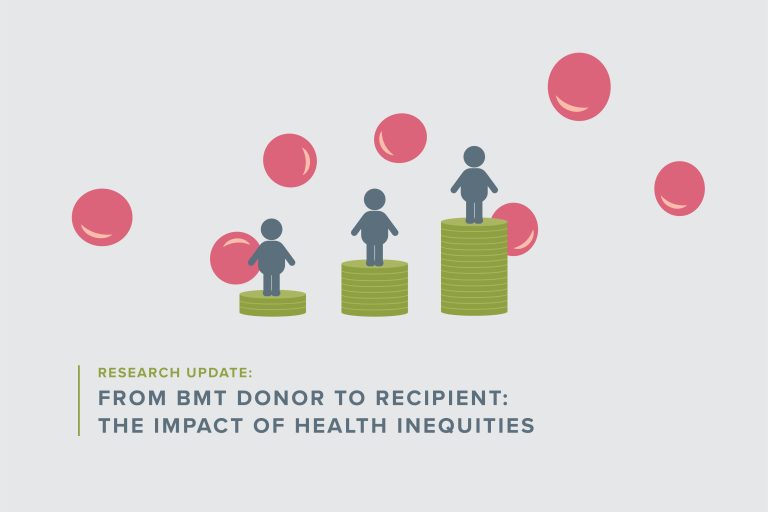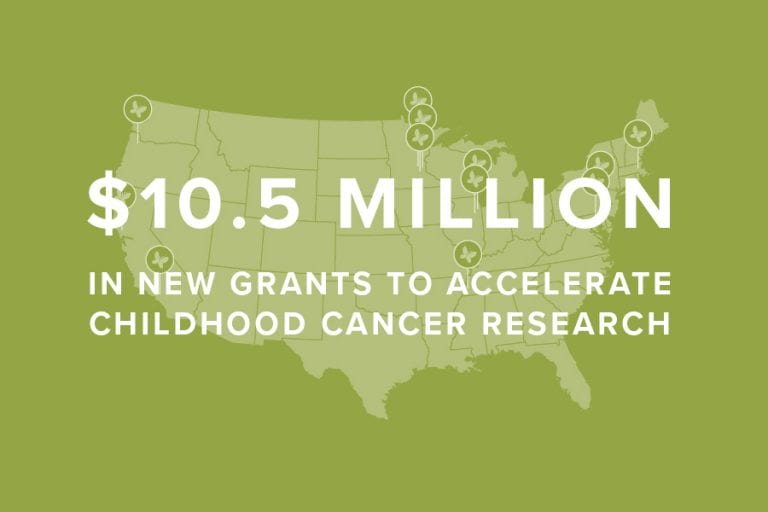Every morning when Courtney wakes up her 6-year-old son Cayden, she just holds him in her lap for a few minutes. She studies the features of his face, sometimes stroking an eyebrow or touching the curl of his hair. She remembers to be grateful for whatever the day ahead holds. Three years ago, Courtney may have taken these kinds of moments for granted, but not anymore – because three years ago, Cayden was diagnosed with leukemia.
From leg pain to leukemia
It started when Cayden’s teacher at daycare told Courtney that she was worried. The previous day his legs were hurting so bad that he refused to walk. If he needed something across the room, he’d scoot or crawl instead. The leg pain worsened over the weekend, and when Cayden also spiked a fever, Courtney took him to the emergency room. When those doctors still didn’t have answers, Courtney and the pediatrician pushed for Cayden to get bloodwork done to find out what was going on.
“Cayden was my healthy kid,” Courtney said. “He’d had maybe a few colds in his whole life. That weekend though, he would wince from pain when I tried to pick him up. Something was just not right.”
Courtney and her husband, Darryl, took Cayden to the emergency room at the local children’s hospital and after multiple tests and grueling hours of waiting, a doctor opened the door to deliver the news that would upend their lives.
“The doctor came in and introduced the oncologist – I didn’t even know what an oncologist was at the time,” Courtney said. When he said Cayden had leukemia, Courtney collapsed into Darryl’s arms.
“I could not stand. My body felt like it was shutting down, my hands and feet went numb and I’d never sobbed so hard in my life,” Courtney said. She sent a text to a group of close friends who knew they were in the hospital waiting for answers. The text simply said “Cayden has leukemia. Pray.”
The next few weeks were some of the hardest Courtney had ever seen Cayden experience. He had surgery the day he was diagnosed where doctors placed a port in his chest, a small device surgically inserted under the skin where nurses could administer treatments and take blood. He also had an NG tube in his nose to receive oral chemotherapy, because the taste made it too hard for him to swallow it himself. It was hard for Cayden’s parents to watch him be either uncomfortable or in pain for so many months, all the while worrying about the cancer that had invaded his cells and the possible side-effects of the treatments he was getting to fight it.
“I couldn’t even process all the side effects they said he could have, but they said he needed to start chemo the day he was diagnosed so there was no time to think or research we just had to trust the doctors. At one point, we were giving him medications 12 times a day,” Courtney said. “We were intentionally poisoning our child to save his life.”
Treatment and toddlerhood
Cayden tried to take back some control wherever he could. At his weekly appointments to have his blood drawn, he would tell the nurses which color of collection tube to use next. He would sometimes even connect the tubes to collect his blood himself. Courtney vividly remembers one day when Cayden went down to the hospital’s playroom - he couldn’t fully stand up straight, but he used all the energy he had to play and explore. It was such a bittersweet moment – a collision between childhood and cancer.
A devastating relapse
Cayden finished treatment in April 2022 and spent 9 months off chemotherapy – until he told his mom his foot was hurting at his brother Christian’s birthday party. The next morning, Cayden was in too much pain to walk, so Courtney took him to urgent care, and then the emergency room. Cayden had several x-rays, two MRIs, bloodwork and an ultrasound – no answers.
A bone marrow biopsy finally revealed the news Courtney had been dreading – Cayden’s leukemia was back.
“We only got nine months – nine months of no chemo. Nine months of a pseudo-normal life. Nine months of no medical supplies in our house,” Courtney said. “I didn’t cry. I just sat there in utter shock, feeling like I was in a nightmare that I couldn’t wake up from.”
In February 2023, Cayden restarted treatment with 23 days in the hospital. After his initial block of treatment, Cayden and his family traveled to North Carolina to Duke Children’s Hospital where his white blood cells were harvested for a new treatment called CAR-T cell therapy. His cells are being engineered to find and kill cancer cells, while leaving his healthy cells untouched and safe. His care team is still solidifying what comes next, but it could include a combination of immunotherapy, CAR-T therapy and bone marrow transplant. Courtney says he has remained in great spirits and continues to smile, even in the face of a difficult road ahead.
Lighting a fire
Courtney says this journey has changed her on a fundamental level. She didn’t know anything about childhood cancer the day Cayden was diagnosed – now she could tell you as much as some doctors and nurses. She experiences post-traumatic stress associated with Cayden’s treatment. Cayden’s brother, Christian, is having a hard time watching all his brother has to go through. But instead of succumbing to fear, Courtney and her family cherish each happy moment, praying and sharing Cayden’s story to make things better for the children who will unfortunately come after him.
“I’ll be on fire about this for the rest of my life,” she said. “No parent or child should have to go through this. It’s heartbreaking to know childhood cancer research doesn’t get funding because it’s not profitable. There are people who came before us and made things better for Cayden – we want to be the people who make things better for the next family.”
We can do more for kids like Cayden.
Cancer treatments for kids like Cayden often haven't improved in decades - but we believe we can do better by funding research. Your gift supports researchers searching for better, safer treatments for kids fighting cancer.




